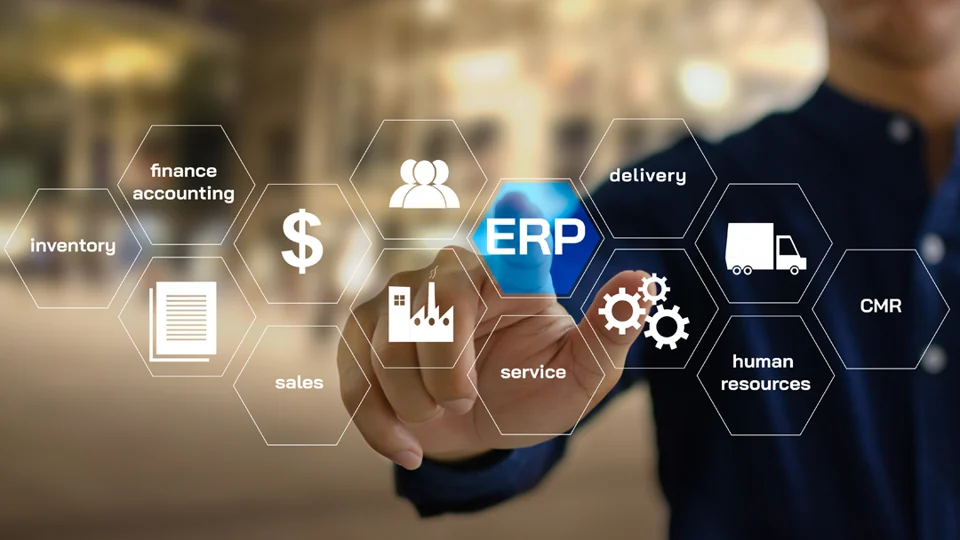Enterprise Resource Planning (ERP) systems are critical tools for modern businesses aiming to streamline their operations, integrate various business processes, and improve overall efficiency. An ERP system centralizes data and processes across different departments, providing a unified view that enhances decision-making, reduces redundancy, and boosts productivity. However, implementing an ERP system can be a complex and challenging task. To ensure a successful ERP implementation, businesses need to approach the process with careful planning, execution, https://noticviralweb.blogspot.com/2024/04/consejos-erp-empresa.html and ongoing management. This comprehensive guide provides essential tips for businesses considering or in the process of implementing an ERP system.
1. Understand Your Business Needs
1.1 Identify Key Business Processes
Before selecting an ERP system, it is crucial to understand your business processes thoroughly. Document and analyze your current workflows, including:
- Financial Management: How are your accounting and financial operations managed? What are the reporting requirements?
- Supply Chain Management: How do you handle procurement, inventory, and logistics?
- Human Resources: What processes are in place for employee management, payroll, and benefits?
- Sales and Customer Relationship Management: How are customer orders processed, and how do you manage customer interactions?
Identifying these processes will help you determine what functionalities are needed in an ERP system.
1.2 Set Clear Objectives
Define what you aim to achieve with the ERP system. Objectives may include:
- Improving Efficiency: Streamline processes to reduce manual work and errors.
- Enhancing Reporting: Gain better insights through real-time data and analytics.
- Boosting Collaboration: Facilitate better communication and information sharing across departments.
- Scaling Operations: Support growth by providing scalable solutions.
Clear objectives will guide your selection process and help you measure the success of your ERP implementation.
2. Choose the Right ERP System
2.1 Evaluate Different ERP Solutions
There are numerous ERP solutions available, each catering to different industries and business sizes. When evaluating ERP systems, consider:
- Functionality: Does the system offer the modules and features that meet your business needs?
- Scalability: Can the system grow with your business and adapt to future requirements?
- User-Friendliness: Is the system intuitive and easy to use for your team?
- Integration Capabilities: Can the ERP system integrate with your existing software and tools?
2.2 Consider Industry-Specific Solutions
Some ERP systems are designed for specific industries, offering tailored features and functionalities. For example:
- Manufacturing: Look for features like production planning, inventory control, and quality management.
- Retail: Consider solutions that offer point-of-sale (POS) integration, customer relationship management (CRM), and supply chain management.
- Healthcare: Seek ERP systems with modules for patient management, regulatory compliance, and financial tracking.
Industry-specific solutions can provide a better fit for your business needs and improve the overall efficiency of the system.
2.3 Evaluate Vendor Reputation and Support
Research potential ERP vendors to ensure they have a strong reputation and provide reliable support. Look for:
- Customer Reviews: Read testimonials and case studies from other businesses that have used the vendor’s ERP system.
- Support Services: Evaluate the quality of customer support, including training, troubleshooting, and ongoing maintenance.
- Vendor Stability: Choose a vendor with a stable financial position and a track record of successful implementations.
A reputable vendor will contribute to a smoother implementation and provide valuable support throughout the ERP lifecycle.
3. Plan Your ERP Implementation
3.1 Develop a Detailed Implementation Plan
A well-structured implementation plan is essential for a successful ERP deployment. Your plan should include:
- Project Scope: Define the scope of the ERP implementation, including the modules and features to be included.
- Timeline: Establish a realistic timeline for each phase of the implementation, from planning to go-live.
- Budget: Outline the budget for the project, including software costs, hardware, consulting fees, and training expenses.
3.2 Assemble a Project Team
Select a project team to oversee the ERP implementation. The team should include:
- Project Manager: Responsible for coordinating the project, managing resources, and ensuring timelines are met.
- IT Specialists: Provide technical expertise and manage system configuration, integration, and data migration.
- Department Representatives: Ensure that the needs and requirements of each department are considered and addressed.
A dedicated project team will help ensure that the implementation process runs smoothly and that all aspects of the ERP system are properly addressed.
3.3 Conduct a Business Process Review
Before configuring the ERP system, conduct a thorough review of your business processes. This includes:
- Mapping Existing Processes: Document current workflows and identify areas for improvement.
- Defining New Processes: Determine how the ERP system will change or enhance existing processes.
- Identifying Customizations: Assess any required customizations to align the ERP system with your specific business needs.
A detailed review will help ensure that the ERP system is configured to support your business processes effectively.
4. Configure and Customize the ERP System
4.1 System Configuration
Configure the ERP system according to your business requirements. This includes:
- Setting Up Modules: Activate and configure the necessary modules for finance, supply chain, HR, and other business functions.
- User Roles and Permissions: Define user roles and permissions to ensure appropriate access levels and security.
- Data Integration: Integrate the ERP system with existing software and tools to ensure seamless data flow.
Proper configuration will ensure that the ERP system functions correctly and meets your business needs.
4.2 Customization
If needed, customize the ERP system to address specific business requirements. Customizations may include:
- Custom Reports: Develop custom reports to provide the specific insights and data analysis required by your business.
- Workflows: Modify workflows to align with your business processes and enhance efficiency.
- User Interface: Adjust the user interface to improve usability and meet the preferences of your team.
Customization should be approached carefully to avoid complications and ensure that the ERP system remains stable and manageable.
5. Data Migration and Testing
5.1 Data Migration
Plan and execute the migration of data from your existing systems to the new ERP system. This involves:
- Data Mapping: Identify and map data fields from the old system to the new ERP system.
- Data Cleaning: Cleanse and validate data to ensure accuracy and consistency before migration.
- Data Migration Tools: Use migration tools and techniques to transfer data efficiently and securely.
Accurate data migration is critical for ensuring that the ERP system functions correctly and provides reliable information.
5.2 System Testing
Thoroughly test the ERP system to identify and address any issues before going live. Testing should include:
- Unit Testing: Test individual components and modules to ensure they function correctly.
- Integration Testing: Verify that different modules and systems work together seamlessly.
- User Acceptance Testing (UAT): Have end-users test the system to ensure it meets their needs and expectations.
Testing helps ensure that the ERP system is reliable, functional, and ready for deployment.
6. Training and Change Management
6.1 Employee Training
Provide comprehensive training for employees to ensure they can effectively use the new ERP system. Training should cover:
- System Navigation: Teach users how to navigate the system and access the features they need.
- Role-Specific Training: Provide training tailored to the specific roles and responsibilities of different users.
- Ongoing Support: Offer resources and support for users to address any questions or issues that arise after implementation.
Effective training helps ensure a smooth transition to the new ERP system and minimizes disruptions to daily operations.
6.2 Change Management
Implement a change management strategy to address the organizational impact of the ERP system. This includes:
- Communication: Keep employees informed about the changes and the benefits of the new system.
- Feedback: Collect and address feedback from users to improve the system and address any concerns.
- Support: Provide ongoing support to help employees adapt to the new system and overcome any challenges.
Change management helps facilitate a smooth transition and ensures that employees are engaged and supportive of the new ERP system.
7. Monitor and Optimize
7.1 Performance Monitoring
After the ERP system goes live, continuously monitor its performance to ensure it meets your business needs. Monitor key performance indicators (KPIs) such as:
- System Uptime: Track the availability and reliability of the ERP system.
- User Adoption: Measure how well users are adopting and utilizing the system.
- Data Accuracy: Verify the accuracy and consistency of the data being processed by the system.
Regular monitoring helps identify and address any issues early, ensuring that the ERP system continues to deliver value.
7.2 Ongoing Optimization
Continuously optimize the ERP system to improve performance and adapt to changing business needs. This includes:
- System Updates: Apply updates and patches to ensure the system remains secure and up-to-date.
- Process Improvements: Refine and enhance business processes based on insights gained from the ERP system.
- User Feedback: Incorporate feedback from users to improve system functionality and usability.
Ongoing optimization helps ensure that the ERP system remains effective and aligned with your business objectives.
8. Conclusion
Implementing an ERP system is a significant investment that can transform your business operations and drive efficiency. By following these essential tips—understanding your business needs, choosing the right ERP system, planning your implementation, configuring and customizing the system, managing data migration and testing, providing training and managing change, and continuously monitoring and optimizing—you can increase the likelihood of a successful ERP deployment.
A well-implemented ERP system can streamline your operations, enhance decision-making, and support your business’s growth and success. Approach the implementation process with careful planning and attention to detail to maximize the benefits of your ERP system and achieve your business objectives.



